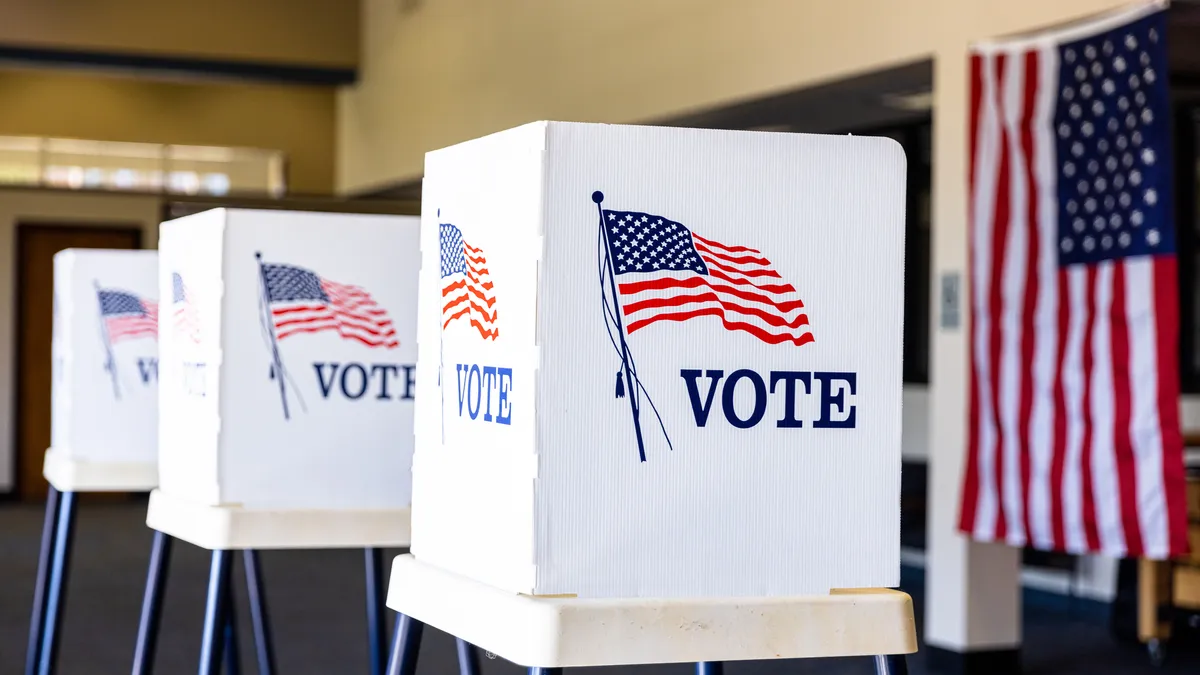Both the upcoming presidential election and the Paris Olympics will help drive ad revenue to legacy media, per a recent report from S&P Global. This influx in revenue may help to balance out other declines. While linear TV and print are unlikely to recover to pre-pandemic levels, U.S. digital advertising revenue is expected to increase by 10.2% in 2024.
The boost to traditional media outlets could be temporary, with the long-term outlook for remaining bleak. In 2025, almost 75% of total advertising will be digital while local and national television advertising is expected to shrink by 2% and 0.8%, respectively.
The “U.S. Advertising Forecast Powered By Digital” also reviews areas of economic growth, inflation and unemployment and how those issues will affect advertising and consumer spending.
Elections and Olympics
Legacy media tends to see an advertising decline during non-election years. This segment of advertising declined an estimated 8.5% in 2023, with total linear TV down 10.8%, according to the report. These numbers are skewed by lower political spending during 2023 compared to 2022.
National TV is currently more exposed to the rapid shift to digital advertising compared to local TV, especially general entertainment and lifestyle networks. These channels have been hit hard by slumping viewership ratings, especially when they lack sports programming to draw eyes.
In the months ahead, cable advertising is expected to decline by 4%, with broadcast TV set to grow by 6.7%. However, this growth is mainly attributed to the upcoming Paris Summer Olympics, a big event for broadcast TV, per the report. Excluding the event, a 6% decline in core broadcast TV advertising is expected.
“We believe national TV will increasingly become a tale of haves and have-nots — those broadcast and cable networks that have a strong stable of sports, particularly the NFL, and news, especially in a Presidential election year, and those that don't,” said the report.
News will, naturally, be a go-to for political advertisers during the election cycle. However, even an influx in advertising from political sources may not be able to save legacy media. S&P predicts that lower economic growth could stall gains. Legacy advertising spend could also be hindered by high inflation and high interest rates.
GDP on the ballot
Despite the big ticket events of the Olympics and a presidential election, the economy is still a top consideration for success in the advertising sector. While these two events will help to boost legacy media, how advertising performs overall is largely dependent on the economy and how much people are willing to spend.
The U.S. GDP, a key economic indicator, is expected to expand by 1.5% in 2024, adjusted for inflation. In 2025, it is expected to grow 1.4%. However, consumer spend, which typically correlates more closely to advertising, is expected to outpace GDP, growing 1.8% in 2024 and 1.6% in 2025.
While increased consumer spending, elections and the Olympics will help legacy media stay afloat, digital media remains the clear winner. Advertising grew 3.7% overall in 2023 while digital, inclusive of search, retail media, social and video, grew an estimated 10.5%.














